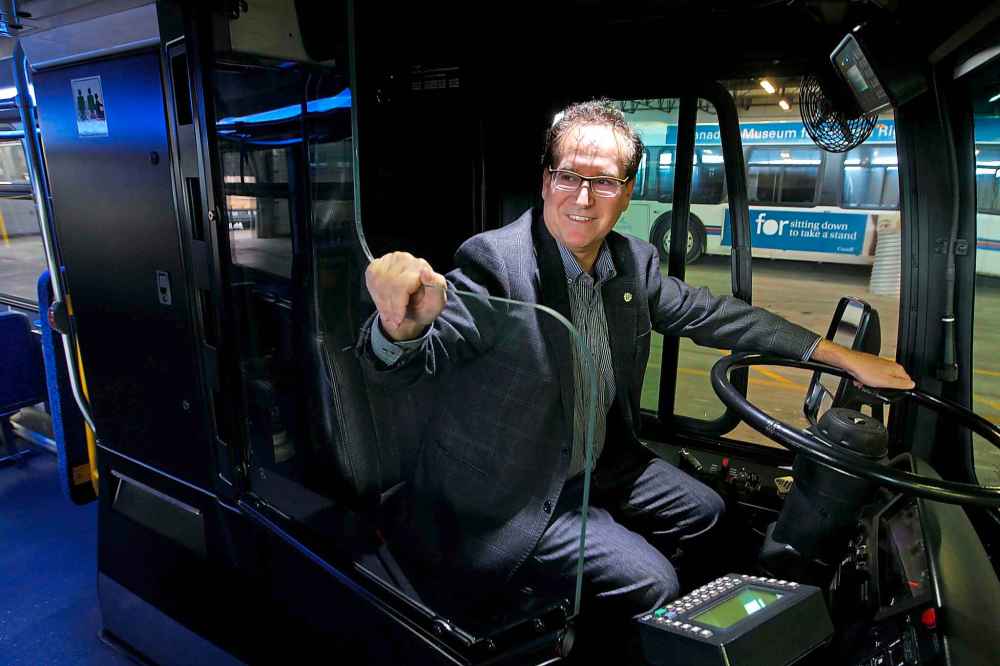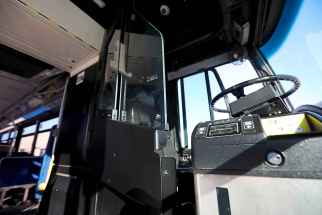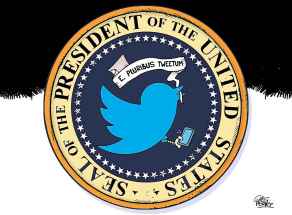Transit driver shield test draws to close
Read this article for free:
or
Already have an account? Log in here »
To continue reading, please subscribe:
Monthly Digital Subscription
$0 for the first 4 weeks*
- Enjoy unlimited reading on winnipegfreepress.com
- Read the E-Edition, our digital replica newspaper
- Access News Break, our award-winning app
- Play interactive puzzles
*No charge for 4 weeks then price increases to the regular rate of $19.00 plus GST every four weeks. Offer available to new and qualified returning subscribers only. Cancel any time.
Monthly Digital Subscription
$4.75/week*
- Enjoy unlimited reading on winnipegfreepress.com
- Read the E-Edition, our digital replica newspaper
- Access News Break, our award-winning app
- Play interactive puzzles
*Billed as $19 plus GST every four weeks. Cancel any time.
To continue reading, please subscribe:
Add Free Press access to your Brandon Sun subscription for only an additional
$1 for the first 4 weeks*
*Your next subscription payment will increase by $1.00 and you will be charged $16.99 plus GST for four weeks. After four weeks, your payment will increase to $23.99 plus GST every four weeks.
Read unlimited articles for free today:
or
Already have an account? Log in here »
Hey there, time traveller!
This article was published 07/08/2018 (2681 days ago), so information in it may no longer be current.
Any protective shield for a bus driver is better than nothing, Winnipeg Transit operators say, but they are worried the models selected for a recent safety trial are inadequate.
Transit installed two different types of protective shields in six buses last fall, as part of a pilot to see if shields would make operators feel safer on the job. Three buses got adjustable shields and three others got fixed ones; the other 600-plus buses didn’t get any new infrastructure.
About nine months after the first barrier was installed on a bus, Winnipeg Transit and the Amalgamated Transit Union Local 1505 are surveying operators about their experience driving around the city with extra protection.

Winnipeg Transit spokeswoman Alissa Clark said in a statement Tuesday she expects the pilot project, which she said was slated to take place over a minimum of six months, will end before September. A decision will then be made about which, if any, such shields will be installed on the rest of the fleet, Clark said.
“I don’t think they should stop expanding the horizons to look for better shields,” one driver told the Free Press Tuesday.
The Transit operator, who asked to remain anonymous for fear of being reprimanded, said a lot of his colleagues feel neither shield the city chose for the pilot is all that effective. A person can still reach around the barrier and grab a driver, he said.
“I have been spit at, and that is a horrible thing to go through. You feel violated beyond belief,” he said, adding many colleagues have experienced much worse, including getting feces, drinks and fists thrown at them.
Transit driver Irvine Jubal Fraser, 58, was stabbed to death while on duty in February 2017. Fraser’s death was part of the reason the city launched the pilot project, said Coun. Marty Morantz.
The shields cost between $2,000 and $4,000, Clark said. She said Tuesday the two options were chosen after the city put out a formal request for proposals, and drivers were part of the group who reviewed bids.
One barrier being tested is made by local bus manufacturer New Flyer Industries. The modified L-shape shield doesn’t entirely enclose the driver seating area.
The other model, made by AROW Global Corp., is adjustable and extends a few inches further.
The ideal shield is one that fully extends, the driver said, adding it would be best to have a shield that activates when a panic button is pressed.
It might have a higher price tag but it would protect all operators from ever getting spit at, he added. “We shouldn’t have to bargain for safety. We should find the best thing.”
Another operator, who also spoke to the Free Press on the condition of anonymity, said he also doesn’t like the current shield options because they don’t fully extend. He considers himself lucky to have never been spit on or assaulted; he said he thinks the city should invest more time and money into the process to keep things that way.
Overall, the shield feedback has been mixed, said Zach Fleisher, communications director at ATU Local 1505.
“There are over 1,000 drivers; people have different preferences on the job,” he said. “Some people feel it’s too enclosed; they like being able to have a conversation without yelling through a hard piece of plastic.”
Representatives from the ATU, as well as bus operators, are participating in the ongoing pilot, Clark said.
“It is important for us to allow as many operators as possible the opportunity to test the shields in the hot summer weather,” she said, adding operator feedback will impact their final decision about what to do about the shields.
No matter what Transit decides, operators who spoke to the Free Press said they’d rather have the adjustable shield than nothing at all.
“It’s a necessity now to have these shields,” said one.
maggie.macintosh@freepress.mb.ca
Twitter: @macintoshmaggie

Maggie Macintosh reports on education for the Winnipeg Free Press. Funding for the Free Press education reporter comes from the Government of Canada through the Local Journalism Initiative.
Our newsroom depends on a growing audience of readers to power our journalism. If you are not a paid reader, please consider becoming a subscriber.
Our newsroom depends on its audience of readers to power our journalism. Thank you for your support.
History
Updated on Wednesday, August 8, 2018 8:39 AM CDT: Typo fixed.











